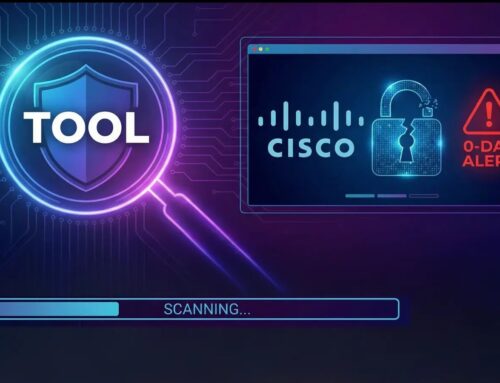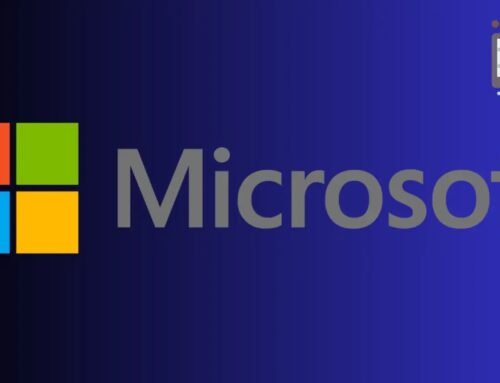
How Businesses Prevent Credential Theft with Early Phishing Detection
The Escalating Threat of Credential Theft via Evolving Phishing Attacks
Organizations today face an accelerating wave of sophisticated phishing attacks, designed to bypass even the most robust perimeter defenses. These aren’t the easily identifiable, poorly worded emails of the past. Modern phishing campaigns are highly targeted, expertly crafted, and leverage advanced techniques that render traditional email filters and static security measures increasingly ineffective. The consequence? A significant surge in successful credential theft, often leaving businesses exposed and vulnerable long before they recognize the breach.
The core challenge lies in the dynamic nature of these threats. Attackers continuously refine their methods, making real-time, proactive detection not just beneficial, but absolutely critical. This post delves into how early phishing detection, particularly through the analysis of suspicious digital artifacts within a secure, isolated environment, serves as the most effective countermeasure against credential theft.
Why Traditional Defenses Fall Short Against Modern Phishing
For years, enterprises have relied on signature-based detection, blacklisting, and rule-based email gateways to fend off phishing attempts. While these mechanisms offered a foundational layer of security, they are inherently reactive. They identify threats based on known patterns. Modern phishing, however, operates differently:
- Zero-Day Phishing Kits: Attackers frequently deploy new or heavily modified phishing kits, rendering signature databases obsolete.
- Sophisticated Evasion: Phishing emails often employ techniques like URL redirection, dynamic content loading, and polymorphic presentation to evade static analysis. Consider the vulnerabilities addressed by patches like those for CVE-2023-38831, which highlight the continued exploitation of client-side vulnerabilities in the context of malicious files.
- Social Engineering Excellence: Attackers combine technical prowess with psychological manipulation, crafting messages that appear legitimate and urgent, compelling users to act without suspicion.
- Bypassing MFA: While Multi-Factor Authentication (MFA) significantly enhances security, advanced phishing techniques, such as Adversary-in-the-Middle (AiTM) phishing, can effectively bypass MFA by proxying authentication requests. This was a particular concern with vulnerabilities like those related to CVE-2022-41040 impacting Microsoft Exchange Server.
This evolving landscape necessitates a shift from preventative blocking to proactive, real-time threat intelligence and analysis.
The Power of Early Phishing Detection and Real-time Analysis
Early detection is the cornerstone of preventing credential theft. It’s about identifying a threat not just before it reaches a user’s inbox, but before it can execute its malicious payload or trick an employee into revealing sensitive information. This involves a multi-faceted approach:
- Sandbox Environments: Detonating suspicious attachments and URLs in isolated virtual environments (sandboxes) allows security analysts to observe their behavior without risk to the corporate network. This reveals hidden malicious actions, command-and-control communications, and attempts to exfiltrate data or credentials.
- Link and File Emulation: Advanced systems emulate user interaction with suspicious links and attachments. By simulating clicks and file openings, they can detect redirects to malicious sites, the dropping of malware, or the rendering of credential harvesting forms, even if they are obfuscated.
- Behavioral Analysis: Beyond signatures, analyzing the behavior of emails, links, and attachments for anomalies is crucial. Unusual traffic patterns, unexpected file modifications, script executions, or attempts to access protected resources can indicate malicious intent.
- Deep Content Inspection: Scrutinizing email headers, content body, embedded objects, and even subtle linguistic cues can reveal phishing attempts that traditional filters miss. This goes beyond simple keyword matching to understanding context and intent.
Remediation Actions and Proactive Strategies
Implementing an early phishing detection strategy requires a combination of technology, processes, and user education:
- Implement Advanced Email Security Gateways: Deploy solutions that incorporate sandboxing, link protection, and AI-driven behavioral analysis, rather than relying solely on signature-based or static filtering.
- Leverage Threat Intelligence Feeds: Integrate reputable real-time threat intelligence feeds that provide indicators of compromise (IoCs) related to new phishing campaigns and known malicious infrastructure.
- Continuous Security Awareness Training: Educate employees on the latest phishing tactics, including vishing (voice phishing) and smishing (SMS phishing). Conduct regular simulated phishing exercises and provide immediate feedback. This remains paramount, as even the most sophisticated tech can’t fully mitigate human error.
- Enforce Strong Authentication: Beyond MFA, consider FIDO2/WebAuthn strong authenticators (e.g., security keys) that are inherently phishing-resistant, as they do not transmit secrets over the network.
- Incident Response Plan for Phishing: Develop and regularly test a clear incident response plan specifically for successful phishing attempts. This includes rapid containment, credential invalidation, and forensic analysis.
- Network Segmentation and Least Privilege: Limit the blast radius of a successful credential compromise by segmenting networks and enforcing the principle of least privilege, ensuring users and systems only have access to resources absolutely necessary for their function.
Effective Tools for Early Phishing Detection
| Tool Name | Purpose | Link |
|---|---|---|
| Proofpoint Email Protection | Advanced email security gateway with deep content inspection, URL rewriting, and sandboxing. | https://www.proofpoint.com/us/products/email-protection |
| Cisco Secure Email (formerly Email Security Appliance) | Comprehensive email security including threat intelligence, antivirus, anti-spam, and advanced malware protection. | https://www.cisco.com/c/en/us/products/security/email-security/index.html |
| Microsoft Defender for Office 365 (MDO) | Integrated email security, safe attachments, safe links, and anti-phishing capabilities for Microsoft 365 environments. | https://www.microsoft.com/en-us/security/business/microsoft-365-defender/office-365-security |
| Virtru Data Protection | Focuses on email encryption and access controls, which can complement phishing defenses by protecting data if credentials are stolen. | https://www.virtru.com/ |
| KnowBe4 Security Awareness Training | Platform for simulated phishing attacks and security awareness training to educate users. | https://www.knowbe4.com/ |
Conclusion
The battle against credential theft is inextricably linked to the ability to detect and neutralize phishing attempts at their earliest stages. As attackers continue to innovate, a reactive security posture is no longer sufficient. By embracing advanced detection technologies like sandboxing, real-time behavioral analysis, and deep content inspection, alongside robust security awareness programs, organizations can significantly bolster their defenses. The proactive identification of suspicious emails, links, and files within secure environments is not just a best practice; it is a fundamental requirement for safeguarding digital identities and preventing catastrophic breaches in today’s threat landscape.





